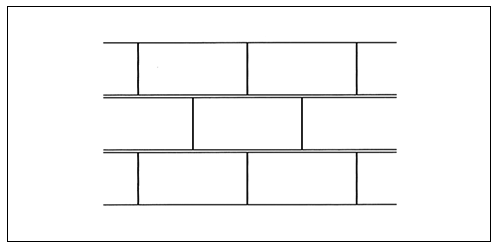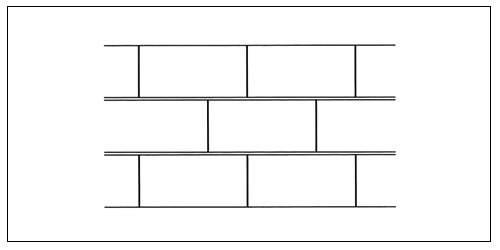Masonry bonds and overbinding dimension
How are walls professionally built using KLB blocks?
Masonry is traditionally joined with mortar and blocks. This creates joints:
Masonry is built in layers, which are executed according to specific rules
- the horizontal joint, for the thick-bed joint about 12 mm thick, for the thin-bed joint 1 mm to 2 mm,
- the butt joint, for blocks without tongue and groove formation about 10 mm thick, otherwise without butt joint mortaring ≤ 3 mm.
- Block layers must always lie horizontally and in a row,
- horizontal joint mortar must always be spread completely filling the joints to guarantee a secure force transfer,
- different types of rock should not be bricked up together within a section of masonry (mixed masonry).
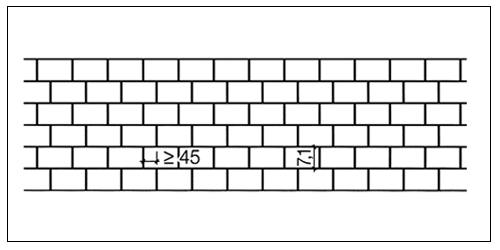
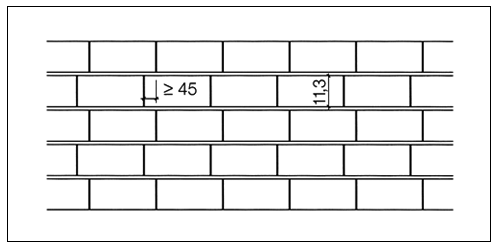
Masonry must take on, distribute and dissipate loads. Loads affect walls horizontally (e.g. wind loads) and vertically (e.g. ceiling loads). Walls that must take these loads, are called load-bearing walls, in contrast to non-load-bearing walls, which are only burdened by their own load and hanging traffic loads.
Blocks lying above and next to each other are always offset to one another. A bond that is able to take on the occurring compressive, shear and flexural stresses in accordance with the mortar used is created. Interlocking laying of bricks is considered a basic requirement in masonry. Butt joints must never lie on top of each other. The butt joints of layers lying on top of each other must maintain a minimum overlap depending on the block height. The overlap (ü) orients itself by the block height (h), but must be equal or greater than 4.5 cm.
ü ≤ 0,4 * h ≤ 4,5 cm
The overlaps must be maintained, if possible exceeded. Overlaps must be maintained in the front view as well as for blocks lying next to each other in the wall interior. Due to the use of large-format blocks common today the walls are produced in the stretcher bond (blocks lying longitudinally). Depending on the overlap length (overbond dimension) it is called a medium bond (overlap = 1/2 length of block) or a lagging bond (overlap = 1/3 or 1/4 length of block).
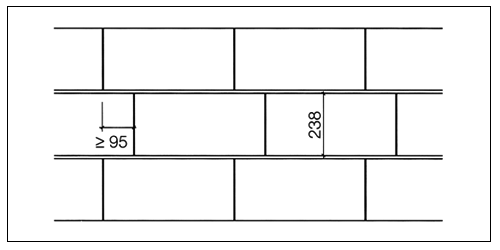
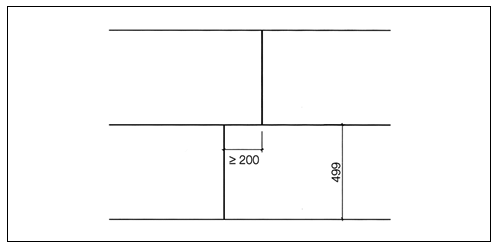
For adjoining wall sections always choose a medium stretching bond. For this the small-format solid blocks are laid in individual block setting, i.e. set the block into the horizontal joint mortar bed, align, throw the butt joint mortar to the laid block, set the next block into the horizontal joint mortar bed, etc.
KLB blocks with tongue and groove interlocks are set in row offsets, i.e. piece by piece the blocks are placed butting “narrowly” against each other into the horizontal joint mortar bed previously spread along the full length of the wall and then aligned overall. Make sure that the blocks are already lowered from above in the area of the tongue and groove interlocking of the previously laid block. This ensures that the blocks sit parallel and tightly together. When pushing the blocks along the horizontal joint mortar wedges form with the result that the butt joint cannot be closed precisely and the block wedges up.
Depending on the block package per block layer an end block with even joint surface and/or a divisible block are included in most KLB blocks. The divisible blocks have a pre-determined breaking point, at which they break apart after scoring them with the mason’s axe and a hit with the stonemason’s hammer. End blocks and divisible blocks must be saved until the respective use.
